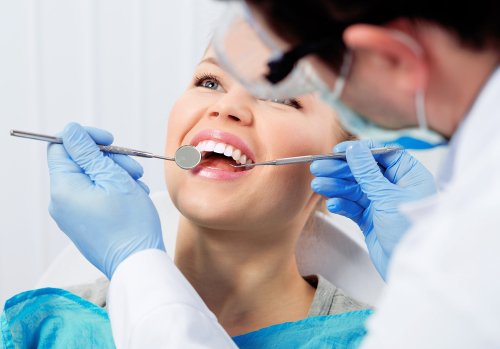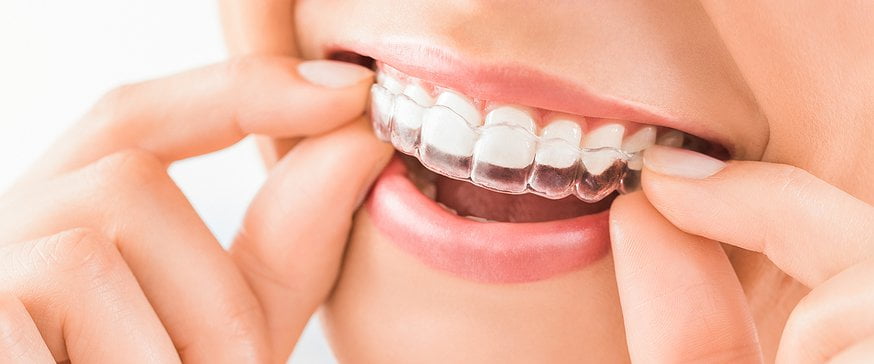An Unbiased View of Legacy Orthodontics
Table of ContentsNot known Facts About Legacy OrthodonticsNot known Factual Statements About Legacy Orthodontics The Ultimate Guide To Legacy OrthodonticsUnknown Facts About Legacy OrthodonticsThe 3-Minute Rule for Legacy Orthodontics
In addition, we provide flexible therapy timetables, flexible payment choices and an enjoyable, pleasurable experience.An orthodontist is a dentist trained to detect, protect against, and treat teeth and jaw abnormalities. Orthodontists function with people of all ages, from children to grownups.
Malocclusion, or misaligned teeth, can result in oral problems, including dental caries, periodontal disease, and tough or painful chewing. Not everybody is born with straight teeth. If you have a poor bite or big areas in between your teeth, you may wish to seek advice from a dental expert focusing on orthodontic treatment.
Things about Legacy Orthodontics
( Picture Credit Score: DigitalVision/Getty Images) Orthodontists make use of fixed and removable oral gadgets, like dental braces, retainers, and bands, to transform the setting of teeth in your mouth. Orthodontic treatment is for oral problems, consisting of: Misaligned teethBite problems, like an overbite or an underbiteCrowded teeth or teeth that are also far apartJaw misalignmentThe objective of orthodontic treatment is to enhance your bite.
A healthy and balanced bite guarantees you can eat, eat, and speak appropriately. While you could consider orthodontists as primarily for kids or young adults who require braces, they can remedy dental troubles at any type of age. Orthodontists participate in university, oral college, and orthodontic college. After graduation, they invest 2 or 3 years in an orthodontic residency program.
All orthodontists are dentists, however not all dental experts are orthodontists. Orthodontic residency programs use intensive, focused guideline for dental experts. They concentrate on two locations: Exactly how to appropriately and securely move teeth How to correctly direct growth in the teeth, jaw, and faceOnce an orthodontist has completed training, they have the alternative to end up being board accredited.
Getting My Legacy Orthodontics To Work
Imbalance, or malocclusion, is the most common reason people see an orthodontist. It is hereditary and is the outcome of dimension differences between the upper and lower jaw or in between the jaw and teeth. Malocclusion leads to tooth overcrowding, an irregular jaw, or uneven bite patterns. Malocclusion is usually treated with: Your orthodontist attaches metal, ceramic, or plastic square bonds to your teeth.
If you have only minor malocclusion, here you may be able to use clear dental braces, called aligners, rather than conventional braces (http://prsync.com/legacy-orthodontics/). Some people require a headwear to assist move teeth right into line with pressure from outside the mouth. After braces or aligners, you'll need to wear a retainer. A retainer is a custom tool that keeps your teeth in place.
They can produce extra room in the mouth without having to pull teeth. Orthodontists make use of wires, medical screws, or plates to sustain your jaw bone.
You may need to see an orthodontist if you have: Crowding or otherwise adequate room for all of your teethOverbite, when your top teeth come your base teethUnderbite, when your base teeth are as well much forwardSpacing or concerns with gapsCrossbite, which is when your top teeth fit behind your bottom teeth when your mouth is closedOpen bite or a vertical void in between your front base and upper teethMisplaced midline, when the center of your base and upper teeth don't align Correcting an oral malocclusion can: Make biting, eating, and speaking easierImprove the symmetry of our face and your general appearanceEase pain from temporomandibular joint conditionsSeparate your teeth and make them less complicated to clean, assisting prevent dental caries or dental caries It's usually a dental professional who initially notices misaligned teeth during a routine exam.
How Legacy Orthodontics can Save You Time, Stress, and Money.

During your initial orthodontic consultation, you'll likely have: An oral examPhotos taken of your face and smileDental X-raysPanoramic (360 level) X-rays of your face and headImpressions to develop mold and mildews of your teethThese examinations will certainly assist your orthodontist understand exactly how to wage your treatment. orthodontics. An orthodontist is a dental practitioner who's had training to treat your teeth and jaw
An orthodontist is focused on your bite, so something like a cracked tooth would be managed by a dental practitioner. Orthodontists are concentrated on your bite, or the way your teeth fit together, and the straightness of your teeth.
Ever asked yourself exactly how stars constantly appear to have perfectly straightened teeth? The solution frequently exists in the proficient hands of an orthodontist. Yet just what does an orthodontist do? Orthodontists are dental professionals who concentrate on remedying irregularities in the teeth and jaws. Their expertise goes beyond just producing a stunning smile; it prolongs to boosting your overall dental wellness and function.
Little Known Questions About Legacy Orthodontics.

While dental braces are the most commonly recognized orthodontic treatment, orthodontists have a varied toolkit at their disposal. The particular technique picked depends upon the extent of the instance, the individual's age, and private choices. These tried-and-true braces utilize a system of brackets adhered to the teeth and linked by cords.
Clear aligners, like Invisalign, are a preferred choice for clients looking for a much more discreet treatment option. These detachable trays are tailor-made to progressively move the teeth's setting. Headgear may be utilized in conjunction with dental braces or aligners to apply extra targeted forces, particularly for remedying jaw inconsistencies. In situations of narrow jaws, palatal expanders can be utilized to create space for correct tooth positioning.